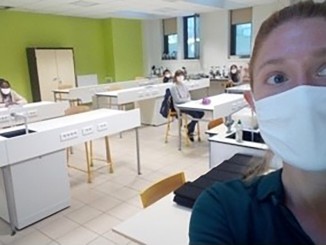The purpose of public education has always been above all to meet the economic needs of the wealthy elite by providing the owners of corporations with a steady supply of workers. Public education was organized as a system not to educate children but to transform them into obedient servants of the corporations. And the architects of the system were always very clear about this goal.
In a speech to the New York City High School Teachers Association in 1909, President Woodrow Wilson, then president of Princeton University, explained the purpose of education for the working class:
We want one class of persons to have a liberal education, and we want another class of persons, a very much larger class, of necessity, in every society, to forgo the privileges of a liberal education and fit themselves to perform specific difficult manual tasks…We are either trying to make liberally-educated persons out of them, or we are trying to make skillful servants of society along mechanical lines, or else we do not know what we are trying to do.
During the birth of industrialization in the U.S. between 1860 to 1900, the owners of factories needed workers. But before industrialization, most workers were raised on farms and were not used to a fast-paced factory, with a supervisor breathing down their neck all the time. Before factory jobs and wage labor became the most common form of work, most work was done on the farm or in an artisan’s workshop. Work was hard, but it was farmers and craftsmen themselves who decided when to rest and when to work. Often it was a family affair, with children working alongside mothers and fathers. Most education was done by the family itself and by the parents as they taught children how to work.
In order to create an obedient workforce, wealthy bosses in various cities started to organize forced schooling on a mass level. Wealthy industrialists like Andrew Carnegie and John D. Rockefeller spent millions of dollars on so-called donations to public schools. Between 1902 and 1920 more funding for public education came from business owners than from the federal government. As John D. Rockefeller put it, “The task is simple. We will organize children and teach them in a perfect way the things their fathers and mothers are doing in an imperfect way”.
Public education – with its system of bells, lining up before entering the classroom, permission to use the restroom, forced silence during class, punishment for disobeying the teacher, and sitting in rows – was designed to model the kind of obedience the bosses wanted of their workers. Most jobs today, as well as in the past century, require very little formal education – but they all require being on time, working fast, following orders, and obeying the boss.
Education has changed a lot since the 19th century. Social movements of workers and oppressed people have forced schools to change as they have forced society to change. Some teachers have been able to reshape the public school system from inside, making education a little more meaningful and creative rather than disciplinary and deadening.
But underneath the surface, the system is still designed to meet the same purpose. It is still based on the factory model, and that’s why the first lesson you learn is “Sit down, shut up, and do what you’re told!”




